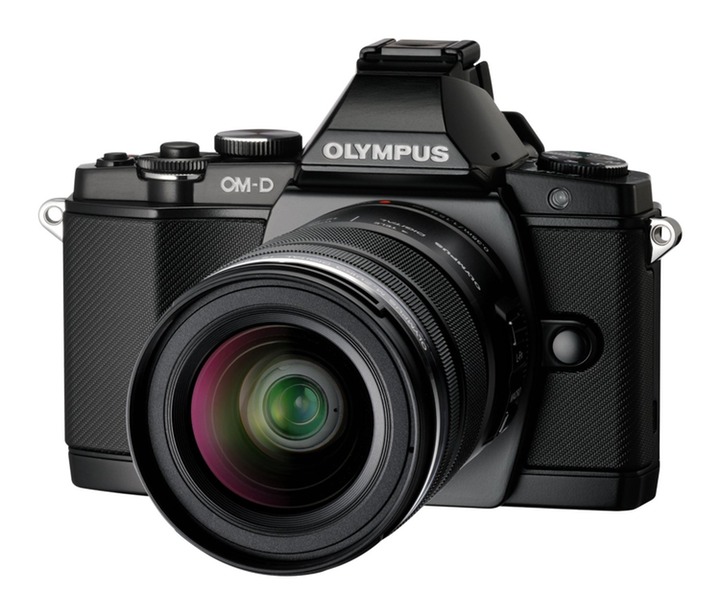I hadn’t had my most recent camera, a Fuji HS20EXR, very long by my standards - just coming up to two years - but we were not a happy couple - not really suited to each other, though it took a long time to work out that it really did annoy me too much, and that photography simply wan’t fun with it, but often a source of frustration.
My previous, a Fuji S7000, I’d had for seven years, and I loved it. Before that I had a little Olympus Camedia 2020Z, alongside my much-loved Olympus OM10 (proper film camera!).
So, I sold the HS20 to a friend - really before I was ready, but he wanted it, and I didn’t. But that means that I am camera-less for the first time I can remember. I have spent several weeks researching the alternatives...
I wondered briefly whether I should buy another ‘bridge’ camera? Having been through the ‘lug a camera and a bag of lenses around’ stage, I got fed up and had bridge cameras. You can get great shots with them - and I did with the S7000. I did with the HS20 too, but less often - largely because it seemed to want to ‘take over’ and run the show - which got frustrating. And the small sensor tended to reduce the detail available in shots, and introduce noise into the image, particularly in the sort of long exposures I often need So, on balance, probably not a great idea.
The obvious thing then seemed to be to buy a dSLR? They're supposed to be the ‘be all and end all’ of camera design. I’m not so sure. The dSLR came about by someone sticking a digital sensor in an SLR in place of the film. Not, probably, the cleverest way to design something new, I feel. Whilst they’re great cameras, and produce very, very, good results, they do have some drawbacks, particularly for the more ‘specialist’ sort of photos I take - toy soldiers and dragonflies (in addition to ordinary ‘happy snaps’). The drawbacks are connected to the design - for my sort of photography, it is usually easiest to frame the shot using ‘Live View’ (i.e. using the monitor on the back of the camera) - in fact, often when photographing dragonflies, a lot of the time I’d need eyes on 2’ stalks if I had to use a viewfinder. And, for technical reasons, in Live View, dSLRs struggle to focus (and eat batteries while they’re doing it). They’re also big and heavy, and the lenses, whilst being very, very, good, are also big and heavy. So, I thought maybe, but with some reservations. But what else was possible?
So I spent quite some time researching dSLRs on t’internet, and looking at cameras in shops. I’d got to the stage of having whittled my choices down to two dSLRs (Sony Alpha 65 or Nikon D5200), neither of which was quite ideal. So I toddled off to the local camera shops for a quick chat. And spent about two hours in each talking at length, and in depth, about what I’d used in the past, what I wanted to photograph and why and how. We’re lucky here - two good camera shops, staffed by enthusiasts who really know their onions (and they know a bit about photography too). And gradually I realised that perhaps a dSLR wasn’t the obvious best choice for me, but perhaps a 'Compact System Camera' (CSC), otherwise known as an EVIL camera (Electronic Viewfinder Interchangeable Lens). I hadn't considered that option for a moment.
So, after an evening of reading reviews and suchlike, I went back again the next day, taking a model (Pyrrhus of Epirus), a ‘beanbag’ (my favourite camera rest), and one of my SDHC cards, for a play and to come away with some images to mess with.
The upshot of it all is that I am taking a sort of ‘middle way’. I have bought an ‘EVIL’ camera. A concept dreamt up, I believe, by Panasonic and Olympus. Take a dSLR-sized sensor, and stick it in a small camera - small because you’ve ditched the flapping mirror and pentaprism of the dSLR in favour of using the sensor itself to do all the auto-focussing, metering and stuff and having an electronic viewfinder for those times when the monitor isn’t suitable (very sunny days, etc). It’s small and light, but, because of the sensor, the images are potentially as good as those from a dSLR. Because of the geometry, the lenses can be small and light (relative to those for an SLR), whilst still being very good bits of kit - in fact they're superb - you've got to pay really serious money for lenses as good for a conventional dSLR.
I have actually bought an Olympus OM-D EM-5. It does everything I want (and more besides); it’s controllable; it can produce stunning images; it’s small - the camera, flashgun and a second lens will fit in the bag I carried my HS20 around in. The fact that it looks (at first glance anyway) not unlike my old OM10 is entirely coincidental. Quite unlike my old OM10, it is very complicated - the menu system, in particular, is both convoluted and complex. I suppose it's not surprising - it's virtually a professional tool (in fact, some pro photographers have ditched their dSLRs in its favour). Being complex has its advantages though - every dial and button is customisable, so I can set it up to work just the way I want. Weatherproof magnesium alloy body (and weatherproof lenses!) too.

Some of its technology is 'neat' - for example the LCD monitor on the back is a touch-screen. So what? Touchscreens are common. But in shooting mode, you can simply touch the screen at the point you want the camera to focus, and it will focus there and take the photo. Touch one of the buttons, and the LCD becomes, in effect, a control panel, allowing you to set any of the settings commonly used when taking photos - f-number, shutter speed, ISO, etc., etc.
The one drawback... I've got to wait until my birthday to use it... 38 days and counting.
